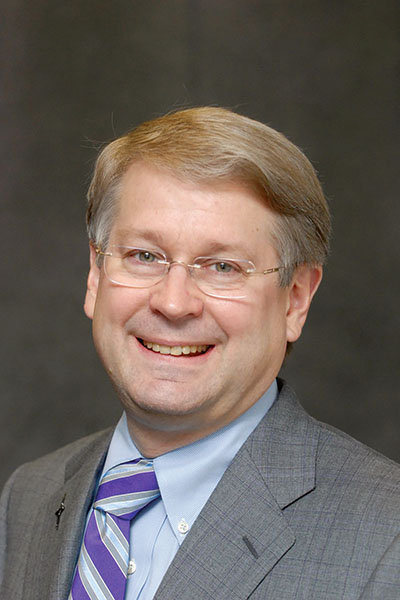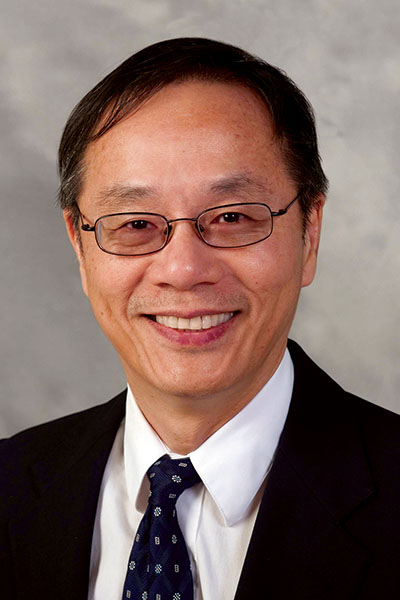Your AIAA presidential candidates
February 2017
John S. Langford and Vigor Yang offer views on membership numbers
One of the greatest honors and privileges in my professional life was my election as President of AIAA. Helping lead this organization and chart our future together is proving to be both critically worthwhile and rewarding. Now, we have a new election on the horizon, a contest between two worthy candidates, which you, our members, must decide. Both candidates are outstanding individuals who I am sure will do much to advance the future well-being of the Institute, regardless of the outcome. I would ask you to read these candidate profiles carefully. In them, both candidates share their vision for the future and the issues they feel are important to the future health of AIAA. Their words will serve as your guideposts for the upcoming vote. As an AIAA member your fundamental right and responsibility is your vote, it is your voice on Institute affairs. When you vote, you are exercising that voice. Please do not remain silent in this election, please make your voice heard.
– James Maser, AIAA President
Ben Iannotta interviewed John Langford on Jan. 10 and Vigor Yang on Jan. 12. The election runs Feb. 6 through March 31.
John S. Langford
Chairman and CEO of Aurora Flight Sciences in Virginia
Declining AIAA membership >>
Membership of the AIAA has declined by a third over the last decade. In 2001, we were about 34,000, 35,000 members. [Editor’s note: AIAA has 30,690 members as of Nov. 1, 2016]. It’s a year-on-year almost uninterrupted decline and we have to do something about that. That is not talked about much in these meetings. The data’s not hidden, but it’s not addressed.
Top goal >>
If I was elected, my central focus would be: “How do we turn that [membership decline] around?” I think that’s our number one key metric and that would be the focus of my term.
Untapped membership markets >>
If you look at some of the big members, they might have 2 to 5 percent of their engineers [as] members of the AIAA. Even a company like Aurora, maybe 15 to 20 percent of our engineers are members of the AIAA. So, that’s a huge addressable market. There needs to be a much tighter coupling between the AIAA and the AIA [Aeropace Industries Association] and I think I know how to make that initiative get started. I can’t promise that it will be successful, but there’s a lot of reasons to think it would be. The second thing is you have got to reach out to the developing markets, what we call the nontraditional aerospace companies, the tech companies that have gotten into this.
Realigning >>
My experience as an entrepreneur is very relevant to the question of: “How do you realign the AIAA so that it speaks to the evolving industry?”
Ignore at your peril >>
A company in this business like Aurora sort of lives and dies on our earnings from the work that we do. A lot of the new entrants don’t have to worry about earnings in aerospace. They don’t even have to worry about revenues in aerospace. It’s a new kind of animal, but it’s a very important change to our industry and I think it’s a mistake to ignore it.
Something is missing >>
The AIAA spends a lot of time trying to decide what its vision is. I am not a huge believer in spending lots and lots of time on mission statements, quite frankly. I think that success is evident when it’s achieved. Our membership decline, at a time when our industry has been growing, says we are still missing something fundamental in serving the needs of our individual members and of our corporate members. The trick is going to be to find a solution set that works for the needs of both of those.
New governance structure >>
There’s a lot of opportunities in it. I think the path is not totally clear about how those opportunities get realized. I had the opportunity to be on this blue-ribbon panel that made clear the need for a streamlined corporate governance process. The AIAA is a big tent. Finding a way for all of those communities to effectively work together under one corporate umbrella has been a challenge. It’s a volunteer organization. It has more similarities in how it runs to a church than it does to a company like Boeing or something.★
Vigor Yang
Chair, Georgia Tech’s School of Aerospace Engineering in Atlanta
Diagnosing the membership decline >>
People did not see the value for them to stay on as a member. I think partly because this is a changing world. It’s not just AIAA’s sole responsibility. I would say it’s kind of a societal issue, because aerospace engineering goes up and down. That’s up to us, how to reverse the trend. For the younger generation, I think the biggest problem is the conversion from student membership to regular AIAA membership. Again, it’s a matter of communications and a value proposition.
Ways to reverse the decline >>
I would say the first one is the contents. That’s up to us: How to provide good service and contents. Can we offer wonderful conferences and workshops, so people come here and can learn something that will facilitate their career development? Number two is networking. Can we provide a most comfortable and effective environment to facilitate their networking? To make it short, I really think value proposition is the key to success.
Grow by reaching out >>
There are so many small firms, so many start-up firms working on data security, working on autonomy, unmanned systems, and so forth. We need to reach out. I have been a professor at big public universities, Penn State and Georgia Tech. We are obliged to reach out [to] every citizen in the state, and also at the same time, to provide education to citizens with all backgrounds. That essentially resonates with the mission of AIAA.
How far can AIAA rebound?
I think there’s a very, very good chance that we can grow by 25 percent in the next three years. The basis is the following: We have almost a half million workforce in aerospace and the defense industries in the U.S. I [also] see tremendous room for us to grow in other parts of the world.
Focusing on students and resource expansion >>
If I became the next president, I really want to work with our colleagues to make sure that every single aerospace engineering student in the U.S., by default, is an AIAA member. Then the next thing is: How to make it happen? Well, that requires a resource. I will personally visit all the corporate members and others, because resource expansion is a key.
Publication proposal >>
I would like to revive our AIAA student journal, because that has stopped some time ago. This time, I don’t think we need a print version. We should do it electronically. AIAA should provide the infrastructure, the resource, and some fundamental guiding principles. And then after that, it’s all students.
Converting students to professional members >>
We can provide a kind of a source of inspiration. Mentorship is another key. If we can provide more opportunities to facilitate a sort of a match-up, even remotely or even virtually, to pair our younger colleagues with senior colleagues, that would be wonderful. By the way, AIAA has been doing that, and we have accomplished [that] to a certain extent. I want to make it more effective.
Governance changes >>
The new governance [structure] would provide opportunities to make AIAA much more efficient, much more efficient in several areas. First one is at the operation level. That will make the AIAA operation much more efficient. Also at the same time, that will put AIAA into such a position to explore new opportunities, and also at the same time to exercise influence. ★










